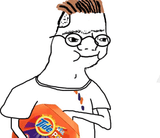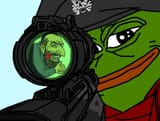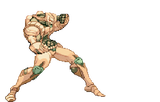>>515498121 (OP)
The parallel with Caravaggio’s Ecce Homo is immediate. As the Prado notes, Christ is presented to the crowd,
>“brightly illuminated with the dramatic chiaroscuro typical of Caravaggio’s style… vivid spots of blood echo the rich crimson of the robe mockingly draped across his shoulders”
(Museo Nacional del Prado, Ecce Homo by Caravaggio). Kirk’s image is similarly stark: his pale face and shirt punctuated by the blood at his neckline, lit against the surrounding chaos of the crowd. Antonio da Correggio’s Ecce Homo also portrays Christ in the moment of humiliation,
>“with drooping head and an expression of suffering resignation”
(Wikipedia, Ecce Homo, Correggio). Kirk’s body, spasming backward, carries that same resignation made involuntary — his expression not posed but seized by violence. Moretto da Brescia’s Assassination of Saint Peter Martyr shows the saint writing
>“Credo”
with his own blood as the dagger descends (Wikipedia, Assassination of Saint Peter Martyr). Kirk, too, becomes unwittingly inscribed: his shirt transformed into a canvas where his cause and his end are written in red. And Caravaggio’s Martyrdom of Saint Matthew stages the ultimate rupture,
>“the action caught at the moment of highest drama, as the murderer has plunged his sword into the fallen saint”
(Wikipedia, Martyrdom of Saint Matthew). Kirk’s photo bears that same lightning-flash immediacy, the human body arrested at the climax of violence, suspended between speech and silence, life and death.
 9/11/2025, 2:28:03 PM
No.515498121
>>515498496
>>515498685
>>515498867
>>515498996
>>515499071
>>515499099
>>515499104
>>515499164
>>515499177
>>515499293
>>515499348
>>515499707
>>515499713
>>515500237
>>515500424
>>515500813
>>515500865
>>515501077
>>515501250
>>515501637
>>515501752
>>515501838
>>515502531
>>515502703
>>515503638
>>515504082
>>515504433
>>515506122
>>515506846
9/11/2025, 2:28:03 PM
No.515498121
>>515498496
>>515498685
>>515498867
>>515498996
>>515499071
>>515499099
>>515499104
>>515499164
>>515499177
>>515499293
>>515499348
>>515499707
>>515499713
>>515500237
>>515500424
>>515500813
>>515500865
>>515501077
>>515501250
>>515501637
>>515501752
>>515501838
>>515502531
>>515502703
>>515503638
>>515504082
>>515504433
>>515506122
>>515506846










